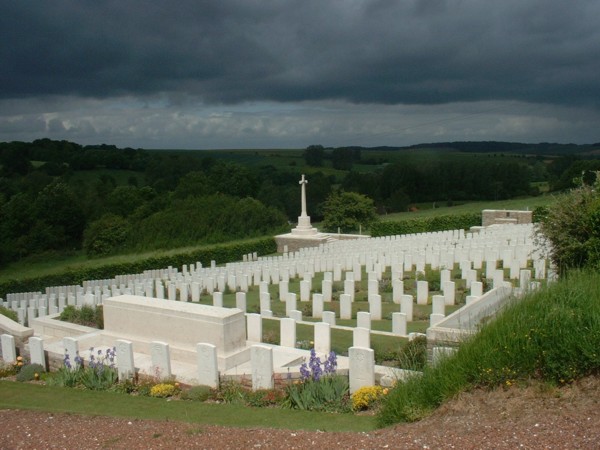John Greenhalgh
Date of birth: 1894
Date of death: 4.9.1916
Area: Outwood
Regiment: West Yorkshire (Prince of Wales’s Own)
Family information: Son of Catlow and Florence Greenhalgh of Holmegarth, Outwood
Rank: Corporal
Service number: 2524
War Service
In the absence of his service record, it is not known if John Greenhalgh had been a member of the Territorial Force, before the outbreak of war. However, he enlisted at Leeds and joined the 1/8th Battalion, West Yorkshire Regiment, a territorial force, part of the 1st West Riding Brigade, 1st West Riding (Territorial) Division.
The Brigade was concentrated at Selby on the 10th August 1914. They later moved for training at York and Strensall Camp, before moving to the Lincolnshire coast, in 1915. The Brigade remained in England until the 14th April 1915, when the 1/8th Battalion, along with the other three West Yorkshire Territorial Battalions, sailed for France. Shortly after joining the British Expeditionary Force, the brigade became the 146th Brigade, 49th (West Riding) Division
The 146th Brigade was deployed in the trenches in both France and Belgium, but was not initially involved in any major attacks, however, shellfire, gas and grenade attacks became the norm against all four battalions and casualties were suffered. During February 1916, the 146th Brigade moved down to the Somme Region, to prepare for the forthcoming offensive
On the 1st July 1916, the 49th Division was in support of the attack against Thiepval village and its defences at Leipzig Salient and Schwaben Redoubt. The 146th Brigade was not called upon to join the attack until 1600 hrs. when the 1/5th and 1/6th Battalions were in the front line. On the hour the 1/6th went over the parapet alone, the 1/5th being unavoidably delayed. Not one man got more than one hundred yards over “No Mans Land”, casualties of a storm of machine-gun fire. Later the 1/7th and the 1/6th Battalions were ordered up to assist the 32nd Division, but the 1/6th could not muster a sufficient force and only the 1/7th was able to proceed. The 1/5th and part of 1/8th were ordered up to the Schwaben Redoubt to make good and consolidate. The two West Yorkshire battalions remained on the Schwaben Redoubt until the early hours of the 2nd July, both battalions suffering heavy casualties, before withdrawing.
On the 7th July, 146th Brigade was ordered to relieve the 25th Division, on the Leipzig Salient, their orders, to hold the Salient at all costs, which they did with great tenacity.
During August, men arrived from other units to reinforce the four depleted West Yorkshire battalions, and preparation was made for a further attack on Thiepval. The attack on the morning of 3rd September 1916 was unsuccessful. Though the 1/6th and 1/8th Battalions reached the German line, they were counter-attacked and driven out. The 146th Brigade was withdrawn at 19.40 hrs. but casualties had been heavy, with the 1/8th Battalion having incurred 303 casualties.
One of these casualties was Private John Greenhalgh, who died from his wounds, on the 4th September 1916. He was buried in the extension to the communal cemetery at Gezaincourt, a small village south-west of Doullens, in France. The cemetery extension now contains 596 Commonwealth burials and a plot of 76 German burials from the First World War.
Family Life
John Greenhalgh was born in 1894, the eldest son of Catlow Greenhalgh and his wife Florence, formerly Walmsley. Catlow Greenhalgh was born in Burnley and in 1893, had married Florence Walmsley, the daughter of a coal merchant of Reddish, Lancashire. On the 29th July 1894, their son, John Greenhalgh was baptised at the United Church, Stockport. Catlow Greenhalgh and his family continued to live at Reddish, where he worked as a fruit preserver. By 1906, the family had moved to Leeds, where Catlow Greenhalgh jnr. was born. By 1911, the family was living at Holmegarth, Outwood, where their youngest child, Nora, was born. At this time, John Greenhalgh had left school and was working with his father, as a fruit preserver.
 Gezaincourt Communal Cemetery Extension
Gezaincourt Communal Cemetery Extension

